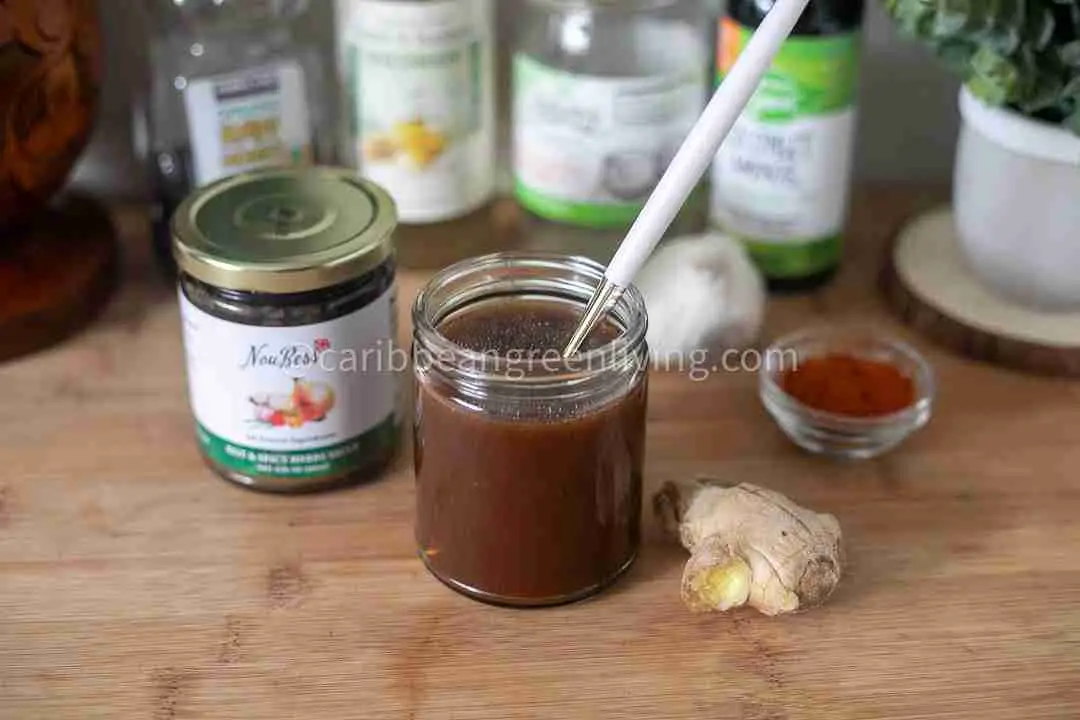A Hearty Vegetable Lasagna: A Mediterranean Delight
Craving a comforting, plant-based meal? Look no further than this hearty vegetable lasagna. A delightful twist on a classic Italian dish, this recipe features a rich blend of savory portobello mushrooms, juicy tomatoes, and a creamy béchamel sauce.
This versatile lasagna can be customized with your favorite vegetables, perfect for a weekend brunch or a weeknight dinner. Inspired by Carla Capalbo’s “Italian – the Essence of Mediterranean Cuisine,” this simplified recipe swaps fresh pasta for no-boil noodles, making it easy to prepare without sacrificing flavor.
Get ready to indulge in a wholesome and delicious meal that’s sure to satisfy.
The Magic of Bechamel Sauce: A Creamy Touch
This baked vegetable lasagna wouldn’t be complete without the luxurious layer of béchamel sauce. Often referred to as white sauce, béchamel is a French classic that adds richness and velvety texture to countless dishes.
The good news? Making béchamel sauce is surprisingly simple! Here’s a quick overview of the process, but for a more detailed guide, check out our full recipe at https://www.caribbeangreenliving.com/how-to-make-bechamel-sauce/.

Choosing the Right Mushrooms
The type of mushroom you use can significantly impact the flavor and texture of your lasagna. Here are some popular options:
- Portobello Mushrooms: These large, meaty mushrooms add a rich, earthy flavor and a satisfying texture. They’re a great choice for vegetarians and meat-eaters alike.
- White Mushrooms: A classic choice, white mushrooms offer a mild, slightly sweet flavor and a tender texture. They’re versatile and work well in a variety of dishes.
- Oyster Mushrooms: These delicate mushrooms have a slightly sweet, briny flavor and a soft, almost buttery texture. They add a unique flavor profile to your lasagna. Add fresh parsley for a fresher taste.
- Wild Mushrooms: For a truly gourmet experience, consider using a mix of wild mushrooms. These can include shiitake, chanterelles, and more, each with its own distinct flavor and aroma.
Ultimately, the best choice of mushroom will depend on your personal preference and what’s available at your local market. Don’t be afraid to experiment and try different varieties to find your favorite.


Adding a Protein Boost: Meat and More
While this recipe is a delicious vegetarian option, you can easily add a protein boost to make it a heartier meal. Here are a few ideas:
- Grilled Chicken or Steak: Add grilled chicken or steak to the lasagna for a more substantial meal.
- Crispy Bacon: Crumble cooked bacon and sprinkle it over the lasagna for a smoky, salty flavor.
- Prosciutto: Layer thinly sliced prosciutto between the layers of lasagna for a savory, salty kick.
- Ground Meat: Sauté ground beef, pork, or a combination of both and incorporate it into the tomato sauce for a classic meat lasagna flavor.
Remember to adjust the cooking time accordingly when adding meat to the lasagna.
Ingredients you will need for the Baked Vegetable Lasagna
- For the Lasagna:
- No-boil lasagna noodles: These pre-cooked noodles save time and effort.
- Olive oil: Used for sautéing the vegetables.
- Garlic and onion: Aromatic vegetables that add flavor to the dish.
- Grapevine tomatoes or Campari tomatoes: Very juicy tomatoes with lots of flavors that help cook the noodles.
- Fresh parsley, oregano, and thyme: Herbs that enhance the flavor profile.
- Portobello mushrooms: Earthy and meaty mushrooms that add a satisfying texture.
- Lemon juice and herbes de Provence: Brighten the flavor of the mushrooms.
- Bechamel sauce: A creamy, rich sauce made with:
- Unsalted butter: Provides richness and flavor.
- Flour: Thickens the sauce.
- Hot milk: Creates a smooth and creamy texture.
- Nutmeg: Adds a warm, nutty flavor (optional).
- Salt and white pepper: Season the sauce.
- Mozzarella cheese: Melty and gooey cheese that adds richness and flavor.
- Parmesan cheese: Salty and nutty cheese that adds a savory crunch.
- Crushed red pepper: Optional, for those who like a little heat.
- Noubess hot and spicy sauce: An optional ingredient to add a fiery kick to the tomato mixture.
To make the recipe
Follow the instructions below and check out the tips.










Tips and Notes for the Baked Vegetable Lasagna
- Use a non-stick pan for the tomatoes and an aluminum pan for the mushrooms for better cooking results.
- For a tangy twist, add 1-2 teaspoons of Dijon mustard to the béchamel sauce.
- This recipe makes a great side dish to baked chicken. Both dishes can cook in the oven simultaneously for a complete meal.
- Want to add a cheesy twist? Experiment with sharp cheddar or asiago cheese along with parmesan for a more intense flavor.
- Feeling adventurous? While spinach can be tricky due to its moisture content, you can add other vegetables like carrots to this dish.
- Don’t throw away the leftover sauce from the lasagna! It’s packed with flavor and perfect for drizzling on top of individual slices.
Achieving a Golden-Brown Top
To achieve a beautiful, golden-brown top on your lasagna, consider these techniques:
- Cheese Choice:
- Yellow Cheddar: This cheese not only adds a rich, creamy flavor but also browns beautifully.
- Mozzarella: While classic, it can sometimes brown unevenly. Combining it with cheddar can help achieve a more consistent color.
- Topping with Breadcrumbs:
- Sprinkle a layer of breadcrumbs over the top of the cheese. This will create a crispy, golden-brown crust.
- For extra flavor, consider toasting the breadcrumbs in butter before adding them to the lasagna.
- Broiling:
- After baking the lasagna, turn on the broiler and broil the top for a few minutes, or until it reaches your desired level of browning.
- Keep a close eye on it to prevent burning.
By combining these techniques, you can create a visually appealing and delicious lasagna that will impress your guests.







Regular vs. No-Boil Lasagna Noodles
When making lasagna, you have the option of using either regular or no-boil lasagna noodles. Here’s a breakdown of the pros and cons of each:
Regular Lasagna Noodles:
- Pros: More traditional method, often preferred for a chewier texture.
- Cons: Requires pre-cooking in boiling water, which can be time-consuming.
No-Boil Lasagna Noodles:
- Pros: Pre-cooked, so they can be added directly to the lasagna without boiling. This saves time and effort.
- Cons: Can become mushy if overcooked or if the lasagna is not baked long enough.
Ultimately, the best choice for you will depend on your personal preference and the amount of time you have.
Food Pairings for Your Lasagna
A delicious lasagna deserves equally delicious side dishes. Here are a few ideas:
- Classic Salad: A simple green salad with a light vinaigrette can balance the richness of the lasagna.
- Garlic Bread: A warm, garlicky bread is a classic pairing for lasagna.
- Roasted Vegetables: Roasted vegetables like Brussels sprouts, carrots, or asparagus can add a healthy and flavorful side dish.
- Caesar Salad: A creamy Caesar salad can complement the savory flavors of the lasagna.
No matter what you choose, enjoy your meal!
The Perfect Pairings: Wine, Beer, and More
A great meal deserves a great drink. Here are some pairing suggestions to enhance your lasagna experience:
Wine Pairings:
- Red Wine: A medium-bodied red wine like a Chianti or Pinot Noir can complement the rich flavors of the lasagna.
- White Wine: For a lighter option, try a crisp white wine such as Pinot Grigio or Sauvignon Blanc.
Beer Pairings:
- Pilsner or Lager: A light, crisp beer can cut through the richness of the lasagna.
- Amber Ale or Red Ale: A malty beer can complement the savory flavors of the dish.
Other Pairings:
- Sparkling Water: A refreshing sparkling water can cleanse the palate between bites.
- Coffee or Tea: A strong cup of coffee or tea can be a satisfying way to end your meal.
Ultimately, the best pairing will depend on your personal preferences. So experiment and find what you enjoy most.

Choosing the Right Pan for Your Lasagna
The right baking dish can make a big difference in the outcome of your lasagna. Here are some popular options:
- Glass Baking Dish: Glass is a classic choice for baking lasagna. It’s durable, easy to clean, and allows you to monitor the browning process.
- Ceramic Baking Dish: Ceramic dishes are stylish and can go directly from oven to table. They retain heat well, ensuring even cooking.
- Metal Baking Dish: Metal pans, such as aluminum or stainless steel, heat up quickly and distribute heat evenly. They’re a great option for achieving a crispy top on your lasagna.
When choosing a pan, consider the following factors:
- Size: Choose a pan that is large enough to accommodate your lasagna without overflowing.
- Depth: A deep dish is ideal for lasagna, as it allows for multiple layers of noodles, sauce, and cheese.
- Material: Consider the material of the pan and its heat conductivity properties.
By choosing the right pan, you can ensure that your lasagna turns out perfectly every time.
This vegetable lasagna is a hearty and flavorful dish that’s perfect for any occasion. The combination of savory mushrooms, juicy tomatoes, and creamy béchamel sauce creates a symphony of flavors that will tantalize your taste buds.
While the original recipe calls for no-boil noodles, I’ve found that regular lasagna noodles work just as well. However, if you prefer a more sturdy noodle, no-boil is a great option. For the tomatoes, I recommend using grapevine tomatoes for their juiciness and flavor.
Whether you’re a seasoned cook or a beginner, this recipe is easy to follow and can be customized to your liking. So, don’t be afraid to experiment with different vegetables and spices. And remember, a great béchamel sauce can elevate any dish.
So, what are you waiting for? Get cooking and enjoy this delicious and satisfying meal!

Baked Vegetable Lasagna
Equipment
- Skillet Pan
Ingredients
- 6 no-boil lasagna noodles
- 2 ½ tablespoons olive oil
- 2 cloves garlic finely chopped
- 1 medium onion finely chopped
- 2 cups grapevine tomatoes
- 1 tablespoon fresh parsley finely chopped
- ½ teaspoon dried oregano
- ½ teaspoon dried thyme leaves
- 1 tablespoon butter
- 2 cups portabella mushrooms or oyster mushrooms or a combination of wild and cultivated mushrooms
- 1 teaspoon fresh lemon juice
- 1 tablespoon herbes de Provence
- Salt and pepper to taste
- 4 ½ cups béchamel sauce https://www.caribbeangreenliving.com/how-to-make-bechamel-sauce/
- 16 oz mozzarella cheese cubed
- 2 cups grated parmesan cheese
- Crushed red pepper optional
- NouBess Hot and Spicy Sauce (optional)
Instructions
- Preheat the oven to 350ºF and grease a 9×13 inch lasagna pan.
- Sauté the aromatics: In a non-stick pan, heat 1 tablespoon of olive oil. Add garlic and onions, cook for 2 minutes, stirring occasionally. Don't let the garlic burn.
- Simmer the tomato mixture: Add chopped tomatoes, parsley, oregano, thyme, crushed red pepper (optional), salt, and pepper to taste. Let the mixture simmer for 6-8 minutes, stirring occasionally. Remove from heat and set aside.
- Cook the mushrooms: In another skillet over medium-high heat, add 1 tablespoon butter and ½ tablespoon olive oil. Add mushrooms and cook for 2-3 minutes, stirring often, until they brown. Add lemon juice, herbes de Provence, salt, and pepper. Let the mixture cook for 3-4 minutes until the liquid evaporates. Remove from heat and set aside.
- Prepare the cheese: Cube the mozzarella cheese and grate the parmesan cheese.
Assemble the lasagna:
- Spread a thin layer of béchamel sauce on the bottom of the pan.
- Arrange 3-4 lasagna noodles in a single layer.
- Top the noodles with the mushroom mixture, half of the mozzarella cheese, ½ cup parmesan cheese, and then béchamel sauce.
- Repeat the layer with noodles, tomato mixture, remaining mozzarella cheese, ½ cup parmesan cheese, and béchamel sauce.
- Top with the remaining lasagna noodles, béchamel sauce, and sprinkle with parmesan cheese.
- Bake: Dot the top with butter and bake covered with aluminum foil for 40 minutes.
- Uncover and brown: Uncover the lasagna and bake for another 15 minutes, or until golden brown on top.
- Let it rest: Remove from the oven and allow to stand for 5-7 minutes before serving.
Notes
- Use a non-stick pan for the tomatoes and an aluminum pan for the mushrooms for better cooking results.
- For a tangy twist, add 1-2 teaspoons of Dijon mustard to the béchamel sauce.
- This recipe makes a great side dish to baked chicken. Both dishes can be cooked in the oven simultaneously for a complete meal.
- Want to add a cheesy twist? For a more intense flavor, experiment with sharp cheddar or asiago cheese along with parmesan.
- Feeling adventurous? While spinach can be tricky due to its moisture content, you can add other vegetables like carrots to this dish.
- Don’t throw away the leftover sauce from the lasagna! It’s packed with flavor and perfect for drizzling on top of individual slices.
- Want a spicy kick to the lasagna? Add Noubess hot and spicy sauce to the tomato mixture.
Nutrition
Please keep in mind that nutritional information is a rough estimate and can vary greatly based on the products used.
Nutrition info is automatically generated and provided as a courtesy and as an estimate only.
Corn Allergy:
Always choose ingredients without corn or corn derivatives.

How to make the perfect Bechamel Sauce
Ingredients
- 1/3 cup unsalted butter
- 1/3 cup flour
- 4 1/2 cup milk heated
- Dash of fresh grated nutmeg optional
- salt and white pepper to taste
Instructions
- In a saucepan under low heat, heat the milk and bring it to a gentle simmer to start the sauce.
- In another saucepan, under low heat, melt butter and add flour.
- With a wooden spoon, gently stir butter into the flour until well blended. Do not burn or brown the flour mixture.
- Remove from the heat and whisk a couple of spoons of heated milk into flour and butter mixture. Make sure that everything is well incorporated. Put the saucepan back on the stove over medium heat, add the remaining milk, and keep whisking the mixture.
- Let the mixture come up to a slight boil and continue whisking until the sauce thickens, add nutmeg, stir and remove from heat. Do not let the mixture get too thick.
- The sauce must be a creamy consistency.
Video
Notes
- Use a good saucepan for the sauce.
- Never use a thin bottom pan, or the butter and flour mixture will burn quickly.
- It is best to use a wooden spoon when stirring the butter and flour mixture. It also helps to scrape the bottom of the pan.
- A whisk is a must to help the milky sauce get smooth and silky.
- Add enough butter to coat the flour to prevent lumps from forming. Do not use too much butter, or the milk will separate from the fat mixture.
- Always use warm milk. This will prevent lumps from forming, and you are not disturbing the cooking process.
- Season the sauce at the end of cooking.
- If you end up with a lumpy sauce, pour the mixture in a blender or use a hand blender to make it smooth.
- Storage: stored in an airtight container in the refrigerator for up to 5 days and reheat over low heat on the stovetop.
- Always keep an eye on the sauce so it does not thicken quickly.
- The consistency of this sauce must be creamy.
- Use in recipes requiring Béchamel Sauce. Use the sauce for baking (make gratins) vegetables such as kale, carrots, and corn.
Please keep in mind that nutritional information is a rough estimate and can vary greatly based on the products used.
Nutrition info is automatically generated and provided as a courtesy and as an estimate only.
Corn Allergy:
Always choose ingredients without corn or corn derivatives.
Originally published May 13, 2014. Updated and revised to include tips and notes on February 6, 2023. Revised and updated to add more tips and a new way to make the recipe.






